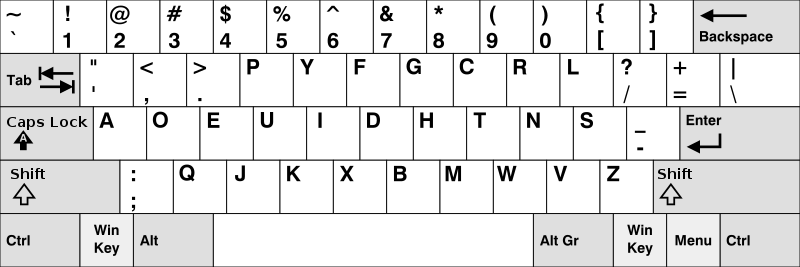For a fun primer on what the Dvorak configuration is, check out this 'zine (www.dvzine.org), but to put it simply, it's an alternative keyboard layout to replace the random QWERTY layout that was designed in 1873 for the original typewriters. Dvorak, developed in the 1930s, is a logical configuration increasing efficiency, putting the most commonly used keys--including all the vowels--on the home row, and maintaining left-right balance by putting vowels on the left and common consonants on the right. It is proven to reduce errors and muscle fatigue (see RSI), and improves typing speed. Actually, I had noticed some pain in my hands and forearms a couple weeks ago which I had suspected was from typing, and that jarred my memory about Dvorak.
For now, as I relearn touch-typing, I am typing more slowly than I'm used to, but as I practice I find it's getting easier and the keystrokes make much more sense; no more semi-colon on the home row (now it's where the Z key was). I have probably put about 5 hours of practice in thus far, and they say you can get back up to speed (40 wpm) after about 18 hours of practice.
In any case, the story of the inventor of QWERTY, Christopher Latham Sholes, is an interesting one and worth reading. The sheer ridiculousness of still using a layout that became obsolete by 1878 with the advent of a spring-loaded typebar alone converted me. And since configuring a computer keyboard for Dvorak is already built into Mac and Windows, I'm well on my way. Wanna join me? Click here to add the keyboard setting (no installation required).




